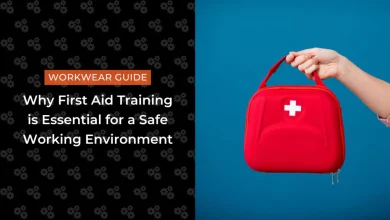Heat Stroke vs. Heat Exhaustion: What’s the Difference?

On a blazing summer afternoon, two colleagues leave a construction site—one dizzy, drenched in sweat and desperate for water, the other, oddly dry-skinned and confused. Same sun, different emergencies. Knowing how to tell heat stroke vs. heat exhaustion apart could save a life, because one condition is a warning sign and the other is a full-blown medical crisis. For extra peace of mind, comprehensive health screens like LifeCell’s Ayushman Wellness package can flag dehydration-related changes early, giving you a baseline before temperatures soar. In this guide, we’ll unpack the symptoms, first-aid steps and prevention habits that keep you, and those around you, safe when the heat is on.
Why Distinguish the Two?
Heat exhaustion is the body’s SOS when it can’t cool itself fast enough; heat stroke is what happens if that SOS is missed and core temperature rockets past 40 °C. Untreated heat stroke can harm the brain, kidneys and heart, so spotting exhaustion early is critical. Certain medicines—diuretics, beta-blockers, antihistamines—can dull thirst or reduce sweating, making both illnesses harder to notice. Older adults and young children also regulate heat less efficiently, sometimes skipping the exhaustion stage and sliding straight into heat stroke.
Key Differences at a Glance
Below is a comparison table to help you assess better:
| Feature | Heat Exhaustion | Heat Stroke |
| Core Temperature | Up to 40 °C | Above 40 °C |
| Skin | Pale, clammy, profuse sweating | Hot, dry or very damp |
| Mental State | Dizziness, headache, thirst, irritability | Confusion, seizures, loss of consciousness |
| Other Signs | Cramps, nausea, goosebumps (rash), weak pulse | Rapid pulse; shallow breathing |
| First Aid | Rest, cool fluids, loosen clothing | Call emergency services, misting or fanning, rapid whole-body cooling |
Keep an eye out for these tell tale signs. By understanding the key differences between heat stroke vs. heat exhaustion, you can remedy accordingly.
Early Warning Signs You Shouldn’t Ignore
While any of the above symptoms could mark the start of heat exhaustion, muscle cramps is possibly the first proper giveaway. Other important red flags include goosebumps on sun-exposed skin, pale complexion, and worsening nausea. Left unchecked, symptoms progress to vomiting, rapid pulse and fainting. The pivot to heat stroke is dramatic: sweating may stop, body temperature jumps above 40 °C, and neurological changes—confusion, slurred speech or seizures—appear quickly. High humidity compounds risk by preventing sweat from evaporating, so even short outdoor tasks can turn dangerous when the heat index spikes.
First-Aid Steps That Buy Crucial Time
- Move to shade or air-conditioning.
- Loosen or remove excess clothing to improve air flow around the skin.
- Hydrate slowly with cool water or oral rehydration salts; avoid excessive alcohol and other substances that could cause dehydration or increase the heart rate.
- Cool the skin—spray with water, fan gently or place ice packs/towels on the neck, groin and armpits.
- Immerse in a cool bath or shower if available, or sponge the body continuously with tepid water.
- Monitor temperature; if it remains above 40 °C—or if mental status worsens—treat it as heat stroke and call emergency services immediately.
Heat stroke complications could be quite severe and result in coma, rhabdomyolysis or the breaking down of muscles which sends toxins into the bloodstream, damages to vital organs and more. After stabilisation, clinicians may run tests like blood, urine, electrocardiogram (ECG), chest x-ray etc. to rule out further complications or enhance treatment.
Prevention: Habits That Matter Most
l Quench the Thirst
Drink before you’re thirsty. Thirst signals you’re already behind.
l Electrolyte Intake
Use oral rehydration solutions that contain electrolytes when sweating heavily.
l Dress Smart
Light-coloured, loose cotton disperses heat better.
l Time Outdoor Chores
Early morning or evening avoids peak solar load.
l Acclimatise Gradually
Give your body several days to adapt when heatwaves arrive.
l Buddy System
Pairing up ensures someone notices early signs you might miss.
Comprehensive panels like the Ayushman Wellness test can also spot electrolyte imbalances or kidney-stress markers, useful data if your work or sport keeps you in extreme conditions.
When to Seek Medical Care
If someone stops sweating despite the heat, shows confusion or has a seizure, treat it as heat stroke and call emergency services right away. Even after cooling, doctors may admit the person for fluids and organ monitoring to prevent delayed complications. Children, pregnant women and older adults warrant special caution; their symptoms can escalate faster due to smaller fluid reserves or altered circulation.
Conclusion: Keep Cool, Stay Alert
Understanding heat stroke vs. heat exhaustion turns vague summer discomfort into clear action: cool down early, intervene fast and never ignore changes in mental state. With smart daily habits and periodic health checks, you’re equipped to protect yourself and those around you when the temperature climbs. The next time the heat index rises, use this checklist as your quick reference, and stay one safe step ahead of the sun.




